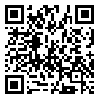BibTeX | RIS | EndNote | Medlars | ProCite | Reference Manager | RefWorks
Send citation to:
URL: http://tumj.tums.ac.ir/article-1-7087-en.html
2- Department of Radiology, Iran University of Medical Sciences, Tehran, Iran. ,
3- General Practitioner, Iran University of Medical Sciences, Tehran, Iran.
Background: Recent studies have indicated the relation of vertebral endplate lesions (Modic changes) to low back pain (LBP). The aim of this study was to investigate the Modic changes in magnetic resonance imaging (MRI) of patients with low back pain, and its correlation with age, sex, type of changes, number of involved segments and location of changes. Additionally, association of degenerative disc changes and disc herniation was assessed.
Methods: In this retrospective study, MRI records of 229 patients with LBP referring to Medical Center of Hazrat-e-Rasoul Hospital, Tehran, Iran, from August to February 2014, were assessed and Modic changes and degenerative and herniated disc changes were recorded.
Results: Based on our observations, a significant association between Modic type and age (P= 0.003) existed in patients with LBP. The highest prevalence in Modic location were observed in anterior part of vertebral endplate (48.8%, P= 0.001). Although, observation of the Modic changes in superior vertebral endplate was higher than inferior parts, but this differences was not statistically significant. The highest prevalence in degenerative disc disease was disc dehydration which was observed in 18.1% of patients (P= 0.04). The relationship between the degenerative changes and Modic type was significant (P= 0.04), while the most prevalent change of disc contour was disc bulging which occurred in 23.7% of patients (P= 0.01). The highest frequency of abnormal disc contour were observed in Modic type 2 which was statistically significant (P= 0.01). Modic surface involvement above 25% was significantly associated with disc herniation (P= 0.04). There was no significant association between Modic height involvement above 25% and disc herniation.
Conclusion: Considering significant association between Modic changes and degenerative and herniated disc changes, reporting of Modic changes is necessary.
| Rights and permissions | |
 |
This work is licensed under a Creative Commons Attribution-NonCommercial 4.0 International License. |





